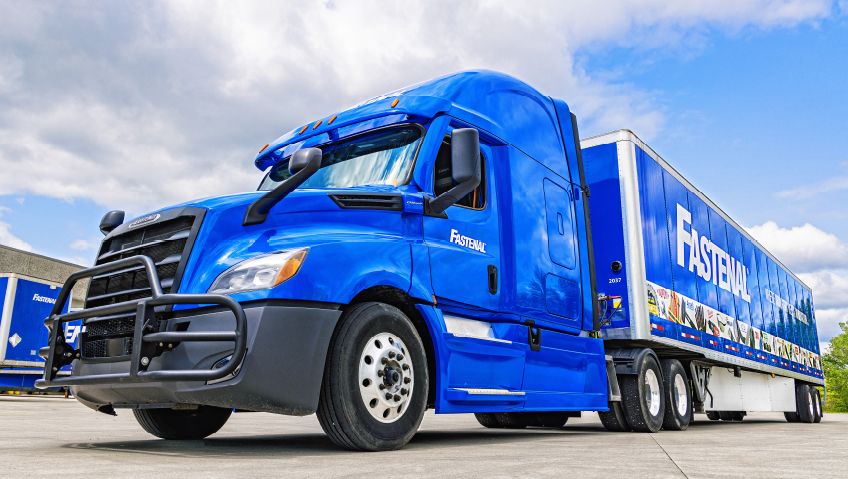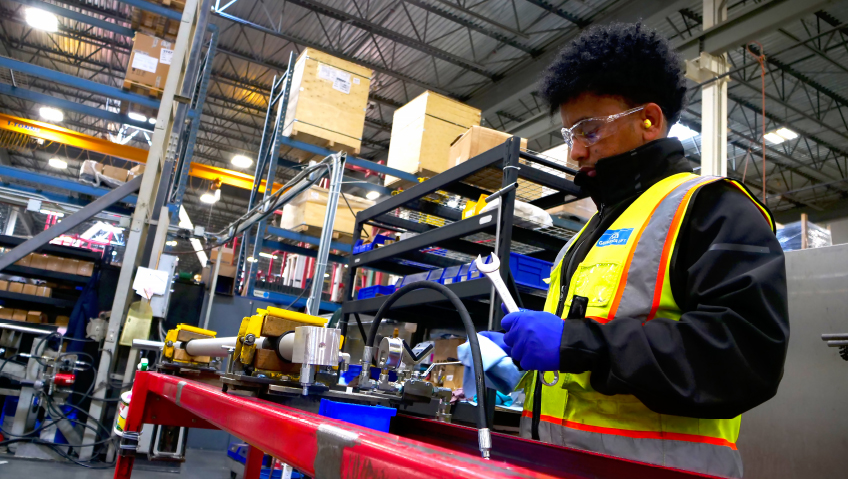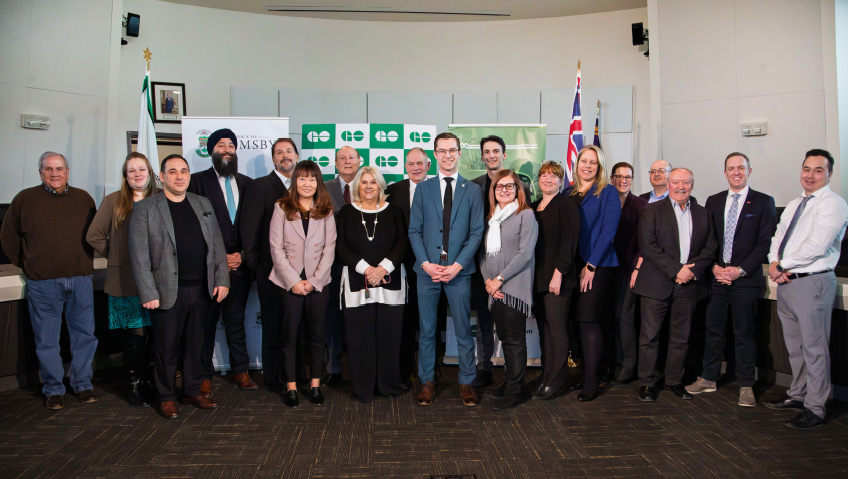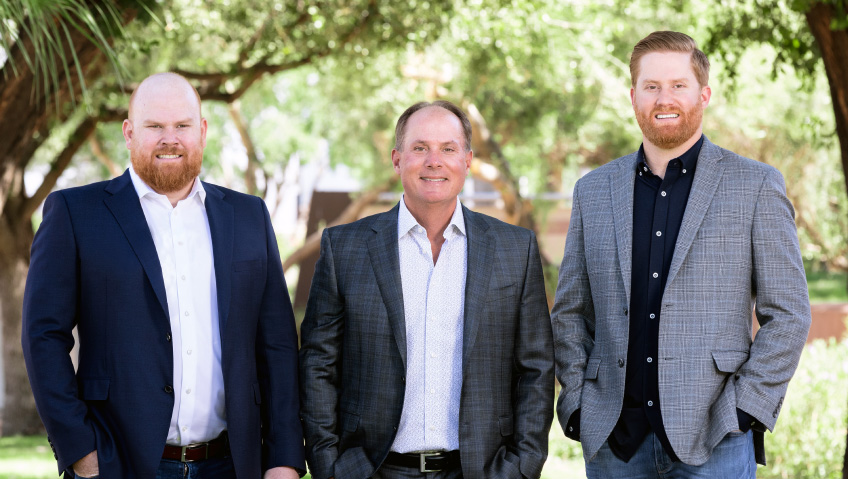HMT LLC was founded in 1978 to deliver superior aboveground storage tank technology. “It really stemmed from when the EPA, the Environmental Protection Agency, came out and the Clean Air Act was instated,” says Allie Alderson, Director of Sustainability and Marketing. “The Clean Air Act domestically really kicked off because of what Great Britain experienced with the great smog that happened in the mid-’50s.” The event caused thousands of deaths. “And those who didn’t die experienced tremendous issues with bronchitis and asthma and [other] breathing issues,” Alderson says. “The United States saw that that was taking place, and they said, ‘okay, we need to put some safeguards in place to ensure that we don’t find ourselves in the same situation. So the Clean Air Act came into play.”
The American aboveground storage tank industry was immediately impacted. “Once that happened, all of the storage facilities across the United States were under scrutiny,” Alderson says. “Rules started to come into place as far as how someone could store something properly, how they could operate those types of storage facilities. And on the heels of that, there was a rule that came out that a specific type of tank had to have an extra layer of protection, which was a secondary seal on their floating roofs.”
HMT stepped up to accommodate those urgent, emerging needs. “Our company started to solve that problem for customers,” Alderson says. “They came out with a product that customers could install to be able to meet that regulation. And our company has built its foundation on solving problems for customers and helping them meet those compliance needs and put themselves in positions to be able to stay within the standard and not experience fines and fees.”
The company has grown steadily ever since, covering even more customer needs. “It started with this suite of products to be able to help customers meet this regulation, then we started helping customers with repairing their tanks themselves if they were experiencing corrosion or something that would potentially allow for anything to leak out of the tanks,” Alderson explains. HMT then moved into the inspection space “because there weren’t enough providers to be able to help our customers evaluate the tanks themselves.” New tank construction came next. “As customers were starting to get a foothold, and they were looking to expand their facilities, we started building tanks for customers and buying different companies to be able to support this along the way.”
Environmental protection continues to be a driving goal for the company to this day. “We are one of the few [companies] that have someone specifically in charge of focusing on sustainable practices and coming up with different ways for us to be able to support our customers to be able to achieve their ESG or sustainability goals,” says Alderson. “Things like making sure that we’re looking at the best ways for us to be able to track greenhouse gases in the future. Understanding what the potential scope 1 and scope 2 emissions might be that we would need to be reporting within the next five years. We’re looking at different ways to be able to look at the different materials, the different types of vehicles that we have on the road to reduce the impact that our company has specifically on the environment.”
The company also focuses on quality, delivering premium products to “make sure that they’re going to last for as long as they can, reduce the number of times that a customer might have to unexpectedly take a tank out of service, and minimize the potential for small leaks to take place while it’s actually in service,” Alderson explains. “Lots of effort is put into those different areas of being proactive and solution-based.”
HMT is still known for the proprietary emission reduction devices that first gave the company its foothold in the marketplace. “We’ve got a suite of products,” Alderson says. Available in different materials at different price points, these emission reduction devices “have gone through rigorous testing and a proven history that we’ve got some of the best products in the business to be able to keep your tank in service for as long as possible.”
Of course, safety is always a priority at HMT, and the company’s robust safety division works hard to prevent incidents, rather than just reacting to them. “We gather a lot of data and are constantly receiving information from the field. We can be proactive, and we can start seeing trends in near misses or in first aid, then we put ourselves in a position to be able to get on top of some of the more potentially catastrophic failures or safety issues that we might experience. So I’m really excited with the fact that we’re a more proactive program, and we’ve got a more mature safety department than you’re going to see across the majority of the industry.”
This safety division is especially focused on workers who are out on the jobsite. “The biggest safety risks are always going to be out in the field,” says Alderson. “It’s making sure that those workers not only get to the job safely, but leave the job safely with a little bit more money in their pocket to be able to support their families. That’s why we do what we do,” she says.
“We do a tremendous amount of training to make sure that our people are prepared for things,” she continues. “We’re seeing more and more people that are going out to these different sites and, especially the younger generation, they like to know what they’re going to experience before they’re even on site. And so we’ve been doing a lot more work and a lot of R&D with virtual reality to help give these guys an understanding of what they’re going to experience whenever they get out to the job site. What are the ways that they need to position themselves to make sure that they’re going to stay out of harm’s way? Even just the most basic actions; we back into parking spots to ensure that if someone needs a car to be moved quickly, that we position it in a way that is very simple for someone to be able to do that without putting others in harm.”
Now, after nearly half a century in business, HMT is eager to keep moving forward. “We’re always looking at the different ways that we can expand our markets and, most importantly, solve additional problems for customers,” Alderson says. “Whether it’s a gap in the market or a gap in our suite of products that we offer, or a gap in a service that a customer needs to reduce the friction to be able to do their jobs, we’re always looking for things to be able to [add] onto our business to be able to do that.”
This strategy has led to very intentional recent growth. “Within the last couple of years, we made a couple of acquisitions,” Alderson says, enabling the company to expand its offerings to a fuller suite of solutions. “We’ve gotten into the water market from an engineering and inspection standpoint for water tanks and water towers. We’re looking at different ways for customers to be able to use drones and to understand better OGI, optical gas imaging devices, to be able to evaluate how effectively something is [functioning]. We’re getting more involved in regulations every day to make sure that we stay on the front end of compliance for our customers.”
This approach means that the company will continue to be a trusted resource “to help customers stay in compliance.” In the future, the team will be keeping up with “what’s happening in the industry, what’s happening with our customers, and helping with them. And then, ultimately, just making sure that we’ve got good processes and a good culture in place to not only facilitate a good working relationship with our customers externally, but to make sure that we’re also looking at our internal customers—which are our employees—to ensure that this is a business that they’re proud to work for.”
With 47 years of industry-leading history, this team certainly has a lot to be proud of as it continues to grow, protect the environment, and exceed customer expectations.






